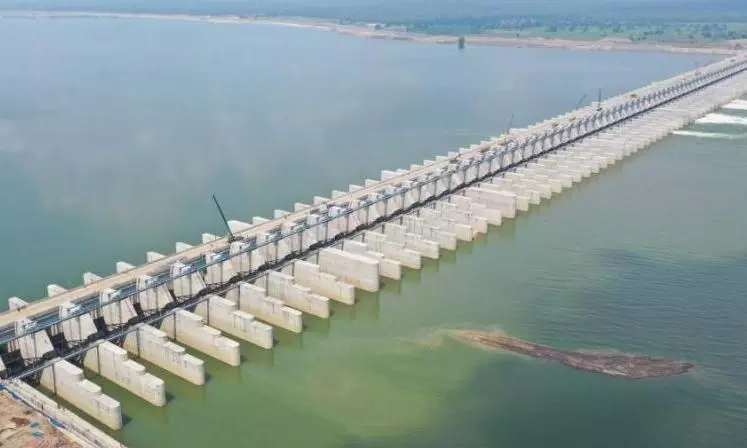Telangana: KLIS Future Buried in Sands of Time

Hyderabad: There appears to be no end to the bad news on the Kaleshwaram project front with reports of agencies involved in the repairs and flood protection measures as recommended by the NDSA, struggling to bring up core samples from under the foundations of the Sundilla, Annaram, and Medigadda barrages of the project.
“It is the Godavari. It is full of sand. And as the drilling for the cores is going on, subsidence of the material is being encountered, resulting in imperfect core samples which might not really be of much help in finding remedial measures for protecting the barrages,” a source familiar with the developments has said.
This situation has been encountered at all the three barrages, the source added.
The Central Power and Water Research Station, Pune, which is consulting with the irrigation department on this issue, has been apprised of the situation and is awaiting further guidance on the next steps, the source said. Just what exactly the nature of the river bed might mean for the safety of the barrages — whether short term or long-term — is uncertain, the source added.
Incidentally, the National Dam Safety Authority which recommended several pre-monsoon protection works at the barrages too had made it clear that it was in a position to provide an assurance on how well these interim measures might hold out and protect the barrages during this monsoon’s flood season. As part of its recommendations, the NDSA sought drilling for core samples of the foundations, and the soil below.
But the new difficulties arising out of the difficulty in acquiring proper core samples, has raised further questions on just how much of a study went into designing the barrages and shortcuts, if any, were taken because of the rush the previous BRS led government was in to complete construction of the barrages.
There have been allegations earlier that even during the construction stage, an adequate number of core samples were not collected. And those being extracted now, at least many of them, may not be of much use when it comes to measures to strengthen the foundations of the barrages, it is learnt.
The shifting of sand from under the foundations of Sundilla, Annaram, and Medigadda barrages during floods was identified as the primary cause for serious leakages from under the foundations at Sundilla and Annaram barrages while at Medigadda, the problem became even more severe with heavy floods causing a huge cavity from under one of the barrage’s blocks resulting in it sinking and two of its piers developing serious cracks.
Among the monsoon flood protection measures recommended, the NDSA was grouting of all such cavities using a mixture of cement and sand. “This, along with other measures including laying of concrete cement blocks for flood dissipation at Medigadda has been completed. At Sundilla and Annaram, work is still on and all their gates are now open to allow water coming from upstream of the river flows through without any obstruction,” an official of the department said.

